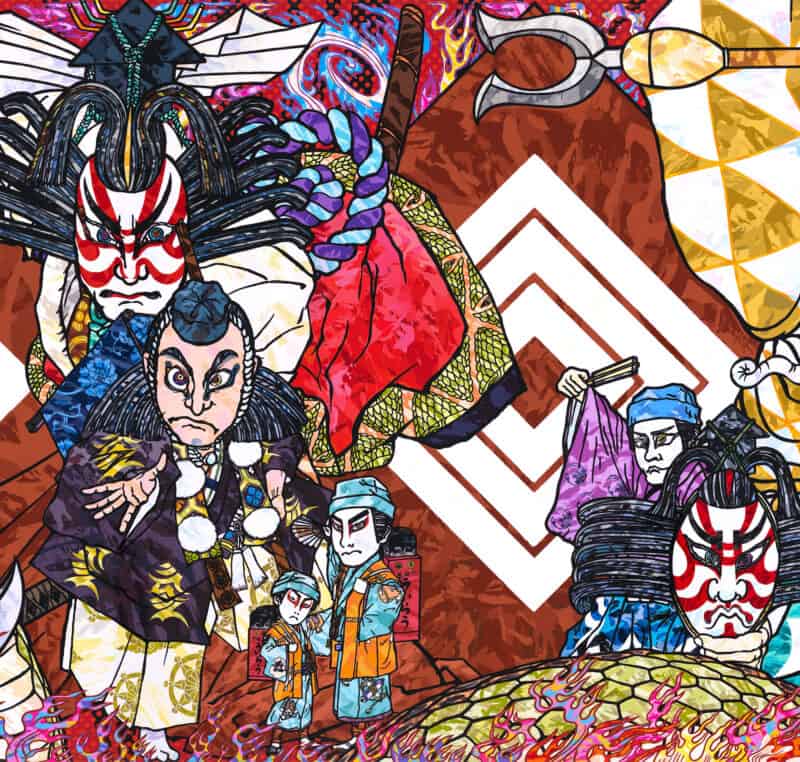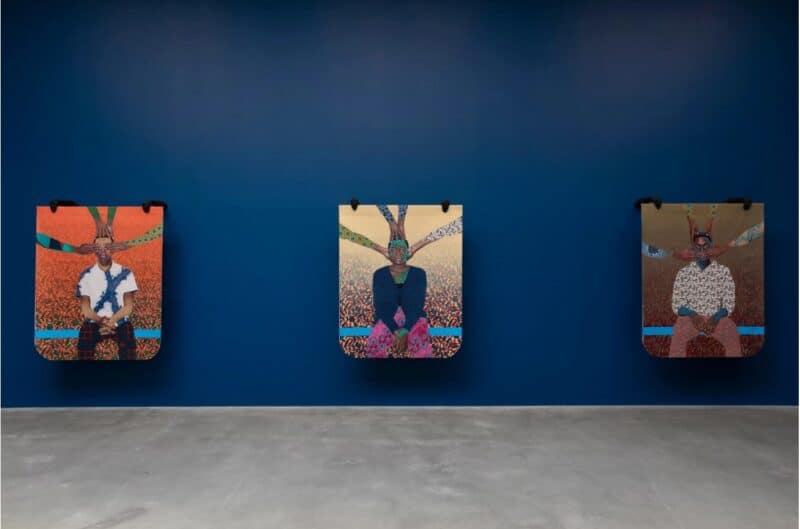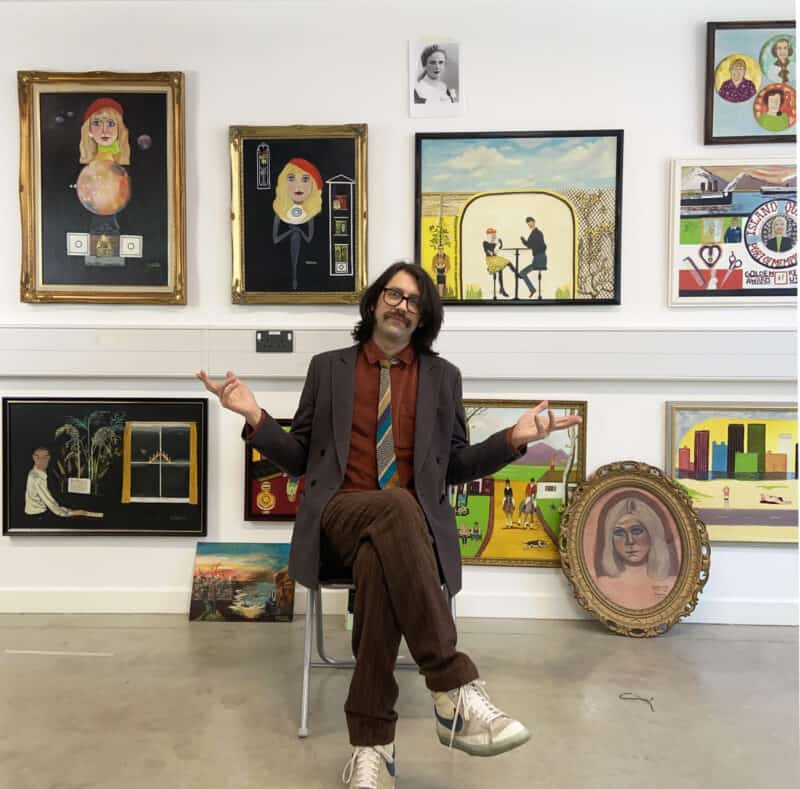
Over the last century cartoons and their cultural iconography have been used as a means of relaying important messages in art. Whether the intention is to give these messages a veneer of childishness – making them easily digested by their audience, an attempt to subvert popular culture, or simply to represent some form of nostalgia or aesthetic; the cartoon in art has endured through the years to become an increasingly relevant medium.
With major exhibitions such as Good Grief Charlie Brown, currently at Somerset House, and last years KNOCK KNOCK: Humour in Contemporary Artat the South London Gallery the cartoon seems to be as prevalent as ever in the minds of artists and their audience. Not always a lighthearted medium, the cartoon has historically been used to touch on serious subject matter. In the catalogue for GGCB senior curator Claire Catterall explains “We examine why some of the themes in Peanuts, including war, mental health, racism, feminism and gender fluidity, seem as pertinent today as they were when they first appeared in newspapers around the world half a century ago,”
GGCB features established artists such as Kaws, Marcus Coates and Ryan Gander and illustrates the impact that cartoons like Charlie Brown had on their work and the important role cartoons have played in modern arts and culture. Gander explains on the gallery’s website “The work of Schulz means a great deal to me as it’s one of the very few narrative styles that encompasses failure and regret. In a world of Hollywood blockbuster endings, it’s refreshing to see non-idealised narrative rendered in idealised styles”.
While Peanuts was getting its first viewers in the 1950s, pop artists were also adopting cartoon styles and techniques as a means of exploring shifts in culture – using thick black outlines and flat, block colours to recreate comic book style images that were indicative of the changes happening at the time: the rise of mass media and consumerism. Artists like Roy Lichtenstein would often recreate – by hand – the halftone and Ben-Day dot shading first created by printing presses used for printing comics and newspapers. Never before had artists used imagery that was so largely considered to be juvenile and low brow to create pieces of high art. This graphic style of art, employing cartoon aesthetics and methods, was also pioneered by artist such as Andy Warhol and Swedish artist Öyvind Fahlström and would dramatically change the face of art in the 20th century.
Pop art solidified the cartoon’s place within contemporary art, but cartoons had also begun to infiltrate the practices of artists outside of pop art. Philip Guston’s pudgy, pastel depictions of Richard Nixon and the Klu Klux Klan and Paul McCarthy’s humorously grotesque takes on Disney characters such as Snow White and Pinocchio, for example were a departure from the graphic style of pop art. These once seemingly innocuous methods and imagery had taken on something far darker and more serious. Cartoons were being used as a means of highlighting social unrest and injustice and to push boundaries of taste and decency.
These themes became common where cartoons in art were concerned, right up until the early 2000s: the wholesome and innocent was juxtaposed against the murky and subversive, albeit in a tongue in cheek way. Artists Jake and Dinos Chapman created faux-ethnographic sculptures which incorporated logos, symbols and cartoon characters associated with the fast food chain McDonalds to sneeringly poke fun at modern art (eg Picasso’s appropriation of African art) and how it’s based on the ‘consumption’ of foreign cultures, misread and labeled as ‘primitive’.
Around the turn of the Millennium – with the introduction of the Internet and the clunky rise of street art – the use of cartoons in art became a much more throw away medium. Cartoons were still being used in a subversive way, but had also developed into something more nostalgic with less meaning. As the cartoon was adopted by street artists like D*Face and Banksy to relay pseudo-political messages, stencilled with a sniggering sentimentality, the cartoon began to lose impact and was almost in danger of becoming passé.
Comic Abstraction: Image Making Image Breaking was the title of an exhibition held at MOMA PS1, New York in 2007. The show featured established artists like Ellen Gallagher and Takeshi Murakami and attempted to define and label a new movement in art, called ‘Comic Abstraction’. The show consisted of work predominately inspired by or featuring cartoons and comics. Although the show was widely considered a critical flop its title became the inspiration for a movement of artists from London and Paris who were rooted in graffiti writing? – a group trying to define themselves and their particular use of cartoons.
Artist Russell Maurice has been dubbed the “chief catalyst” of this new wave of comic abstraction and has nurtured a tight knit group of artists working under this umbrella since around 2010. Maurice was the founder and former director of Galleries Goldstein in London until it closed in 2012 and it was here that he began to showcase like-minded artists – using cartoons as their medium – searching for some kind of definition. He tells me: “We were all aware we had this thing we were doing. We talked a lot about how we needed some kind of label for it because if we had a label people could get their heads around it. We boiled it down to what it was and it just is comic abstraction. This term already existed so it just made sense to use it.”
The inaugural show at Galleries Goldstein, Asbestos Curtain in 2011, showcased this new phase of comic abstraction and included artists such as Antwan Horfee, Ken Sortais, Daniel Sparkes et al who would go on to push the genre forward. All the artists involved had a footing in graffiti but were keen to distance themselves and their art from the mess that street art and urban art had become. Their use of the cartoon and intention behind it was more akin to artist such as Guston, McCarthy and Oldenburg and a million miles away from Banksy. “For me personally it’s just wonky cartoons – anything off kilter and weird,” Maurice tells me. “I wouldn’t say there is nostalgia involved – it definitely has a certain vibe but it’s not trying to capture a particular era. It’s aesthetic for sure but it’s more about atmosphere and capturing a feeling.”
Some contemporary artists are refining this “atmosphere” into something more cerebral, such as Andy Holden – one of the more stand out artists currently showing in Good Grief Charlie Brown. Holden has been fascinated by cartoons since he was child and first learnt to draw by copying cartoons such as the Flintstones and Road Runner. His work now explores the cartoon’s role in society and how he believes that the animations of his childhood were a “prophetic short lived glimpse of the world we now find ourselves in”.
He tells me: “I think they [cartoons] are a large part of our shared visual education and therefor are responsible for the way the world is visually constructed. Think of bitmoji, Pepe [the Frog] memes, cartoon Trump on Steven Colbare – they are currently a big part of the way we communicate visually in day-to-day interactions.”
Holden’s piece Laws of Motion in a Cartoon Landscape (II) (2016) is a 55 minute video, that he has been developing since 2011 as a multimedia performance piece, attempting to formalise the laws of cartoons. The video presents these laws: “Law 1: ‘Any body suspended in space will remain in space until made aware of its situation.’,” for example, and “Law 2: ‘Any body passing through solid matter will leave a perforation conforming to its perimeter.”
The film sees the artist trying to make sense of a world that has become increasingly bizarre and fantastical and taken on more and more cartoon-like traits. “I use them [cartoons] as a way of talking about other things. They work for me as vehicles for talking about the world in general. For me the fluidity and plasticity of the multi-morphic forms of the cartoon landscape had a sculptural quality that I was drawn to, and then later found also that there was something in the cartoon form in general that might help me think about politics and the contemporary world.”
The cartoon’s place within art seems to fluctuate in terms of relevance and gravitas, but it nevertheless endures, influences, inspires and informs. As the cartoon as a medium is embraced by a new generation of artists exploring its potential as a storytelling device or as a tool to make sense of the world, it becomes an increasingly complex medium and perhaps should be treated as such. Holden adamantly explains: “I think the great animators, Fleischer,Avery, Clampett, Disney, Iwerks, Jones etc should be considered great artists and their history should be taught in parallel with the history of art.”
Good Grief Charlie Brown is on at Somerset House until the 3rd of March and Andy Holden’s Laws of Motion in a Cartoon Landscape Will be screening, along with other animations, at The Cinema Museum from the 21st of February until the 3rd of March. Info HERE.









